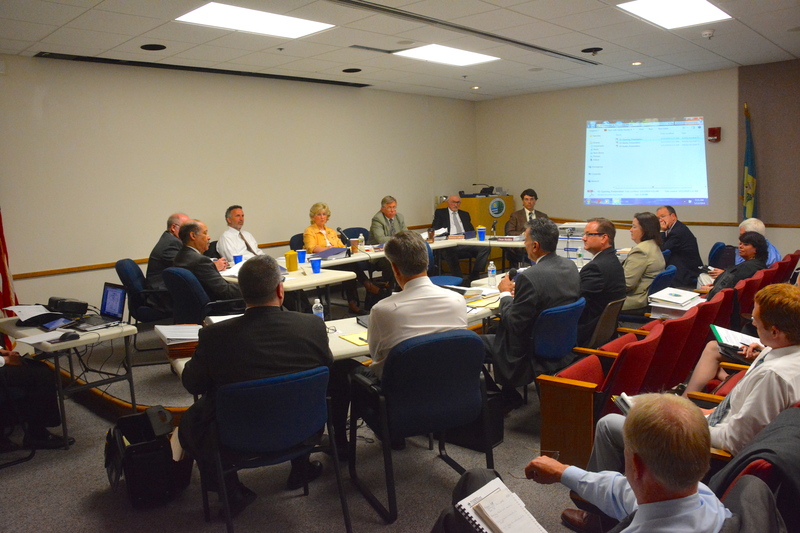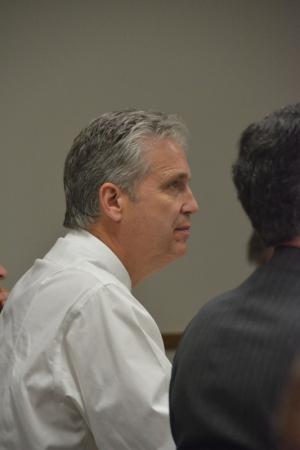After a long day of testimony and a brief deliberation May 14, the five-member Delaware Environmental Appeals Board unanimously upheld the state's brownfield remediation plan for the Pinnacle Foods/Vlasic site near Millsboro.
Allen Harim plans to purchase the 107-acre parcel and convert the former pickle processing plant to process up to 2 million ginseng chickens per week.
The Inland Bays Foundation and Protecting Our Indian River grassroots group filed an appeal of the DNREC-backed brownfield plan signed by Secretary Collin O'Mara in December.
The plan calls for monitoring groundwater to check for contaminents on site and at one off-site well.
“I can't even begin to put into words how upset I am that our legal system does not look out for the people,” said Cindy Wilton, one of the founders of Protecting Our Indian River, which opposes the chicken plant. “Their decision certainly does not reflect any concern. It took our lawyer days to prepare and hours for our witnesses to explain, but only took the board less than 10 minutes to make their executive decision.”
The groups can appeal the board's decision to Superior Court within 30 days. Wilton said the groups have not met to decide if an appeal will be filed.
The groups argue that contamination – particularly nitrates and cobalt – have migrated from the site and end up in nearby residents' drinking water wells. They claim not enough soil and groundwater sampling was completed to get a true indication of the extent and movement of contaminants in the soil and groundwater. In addition, the groups say the brownfield plan is not comprehensive enough to clean up the site.
The brownfield plan requires monitoring groundwater at the site and at one off-site public well at nearby Holiday Acres. It also provides a management plan for any contaminated soils found during construction and renovation at the site.
Allen Harim experts dispute opponents' claims. “This is not a very dirty site,” said Allen Harim attorney Jeremy Homer. “Pinnacle is still responsible.”
Homer said the central question is contamination migrating from the site. “Research has been done to show that groundwater flow is away from properties and not toward them. The contamination is from a different source than the Pinnacle site,” he said.
“The only thing leaving the site is nitrates as nitrogen,” said hydrologist Curtis Herman, a witness for Allen Harim.
“The area was not adequately tested,” said Kathy Martin of Martin Environmental Services, a firm hired by plant opponents. She said key areas with inadequate testing and sampling include the wastewater treatment facility and the sludge lagoon, underground piping from the production and warehouse buildings and the area where hundreds of wooden brine vats were stored.
“This is a significant wastewater treatment plant comparable to a small town,” Martin said. “The report ignored where all pollution started,” she said.
Herman said 102 soil samples as well as groundwater samples were taken at the site and three environmental studies were done resulting in thousands of pages of reports.
“The evidence rebuts arguments from the appellant of inadequate of assessment and that monitoring is inadequate,” said DNREC's Keith Brady. “The environmental conditions warrant the remedy approved by the secretary.”
John Austin, a board member of the Inland Bays Foundation, said his evidence of off-site well testing shows that contaminants – including metals such as cobalt – have leeched from the Pinnacle site. Austin also said that pH levels in the area were acidic, with many wells testing at 4.8; neutral is 7.0. “Alkalinity has been reduced by an acidic plume from the site,” Austin said.
Homer objected to Austin's comments about migration saying while he may be an expert witness as a chemist, he was not a hydrogeologist. “He is not an expert on what is coming from the site,” Homer told the board.
Austin said no investigation was done to determine where the cobalt was coming from. “The contamination was on and off site. Where did it come from?” he asked.
Protecting Our Indian River has a lawsuit pending in Superior Court asking the court to overturn Sussex County Board of Adjustment's approval of a special-use exception to allow the chicken processing plant at the parcel.
























































